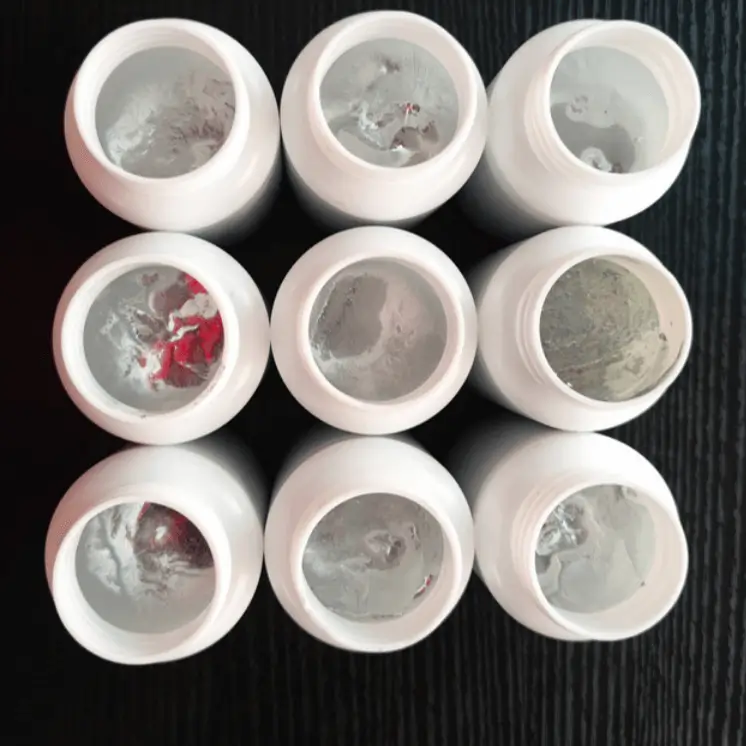Fancymetal offers high purity (customizable) metal products, as well as oxides, product shapes, foils, plates, wires, tubes, rods, powders and a variety of custom shapes.
We also have other Gallium products:
Gallium
Gallium Metal
Gallium Oxide
High purity gallium
99.99% Gallium
Gallium has a low melting point but a high boiling point. Pure liquid gallium has a significant tendency to be supercooled and is easily oxidized in the air to form an oxide film. Gallium is the first element predicted based on the periodic law of chemical elements and confirmed in nature. It is a liquid substance with the largest electrical conductivity and thermal conductivity at room temperature. Gallium is widely used in the electronics industry and is known as the "backbone" of the electronics industry.
Physical properties:
It is a light blue metal that turns into a silvery white liquid at 29.76°C. Liquid gallium is easily supercooled. Gallium can wet the glass, that is, adhere to the surface of the glass, so it is not suitable to store it in glass containers. It can be sealed in plastic containers. It becomes liquid when heated to the melting point. When it changes from liquid to solid, its volume increases by approximately 3.2%. Gallium is stable in dry air at room temperature. Pure gallium is silver-white, has a high boiling point, and has a very low vapor pressure at about 1500°C.
Chemical properties:
Gallium is relatively stable in dry air and forms an oxide film to prevent further oxidation. It loses its luster and is further oxidized in humid air, and ignites when heated to 500°C. It reacts slowly with water at room temperature, but reacts violently with boiling water to generate gallium hydroxide and release hydrogen gas. When heated, it dissolves in inorganic acid (generating Ga3+) or caustic alkali solution, reacts with alkali to release hydrogen, and generates gallate, which can be corroded by cold concentrated hydrochloric acid and is insensitive to hot nitric acid. It can react with halogen, sulfur, phosphorus, arsenic, antimony, etc. at high temperatures.
Gallium has +1, +2 and +3 valences in chemical reactions, of which +3 is its main valence. Gallium is similar to zinc and less mobile than aluminum.
Preparation Method:
It can be extracted from bauxite or sphalerite, and pure gallium can be obtained by electrolysis. Gallium in ores or secondary resources is often first leached with acid or alkali, and then ion exchange, graded precipitation, and solvent extraction are used to enrich the gallium in the leachate, and finally 99.99% crude gallium is prepared through electrolysis.
The high-purification preparation of gallium usually uses industrially produced crude gallium as raw material. Taking advantage of the characteristics of gallium's low melting point and high boiling point, as well as the different distribution ratios of the main metal and impurity elements in different phases, it is produced through electrolytic refining, partial crystallization, and single crystallization. Technologies such as crystal growth method, zone smelting method, vacuum distillation method, and vacuum pyrolysis method are used to further purify and prepare 99.999% to 99.999999% high-purity gallium.
Store Method:
Since the density of liquid gallium is higher than that of solid, its volume expands during solidification and its melting point is very low. It will continue to melt and solidify during storage. Therefore, using glass for storage will break the bottle and soak the glass, causing waste. Gallium is suitable for storage in plastic bottles (not full).
Application:
✔Gallium arsenide and gallium nitride are known as third-generation semiconductor materials and are used to mass-produce integrated circuits and optoelectronic devices (laser diodes, light-emitting diodes, photodetectors and solar cells).
✔Pure gallium and low-melting alloys can be used as heat exchange media for nuclear reactions, filling materials for high-temperature thermometers, and catalysts for diesterization in organic reactions.
✔Gallium-68 emits positrons and can be used for positron tomography. Gallium-indium alloys can be used as alternatives to mercury.
✔Gallium metal and its compounds are also widely used in biomedical fields such as antibacterial and antibacterial, biomedical imaging, medical filling materials, medical diagnosis, and disease treatment.
Advantages:
✔ Strict quality control of raw materials, process control and pre-delivery processes.
✔Strong technical capability makes it a reliable long-term supplier.
✔Technical support: 24 hours technical support by email or phone.
History:
Gallium is the first chemical element in the history of chemistry that was first predicted theoretically and then discovered and verified in nature.
In 1871, Mendeleev discovered that there was a gap under the aluminum element in the periodic table that had not yet been occupied. He predicted that the atomic weight of this unknown element was about 68, the density was 5.9 g/cm³, and its properties were similar to aluminum. His prediction The prediction was confirmed by French chemist Bois Beautrand in 1875. He observed a new purple line in the atomic spectrum of zinc extracted from sphalerite ore (ZnS), extracted and purified the new metal.

